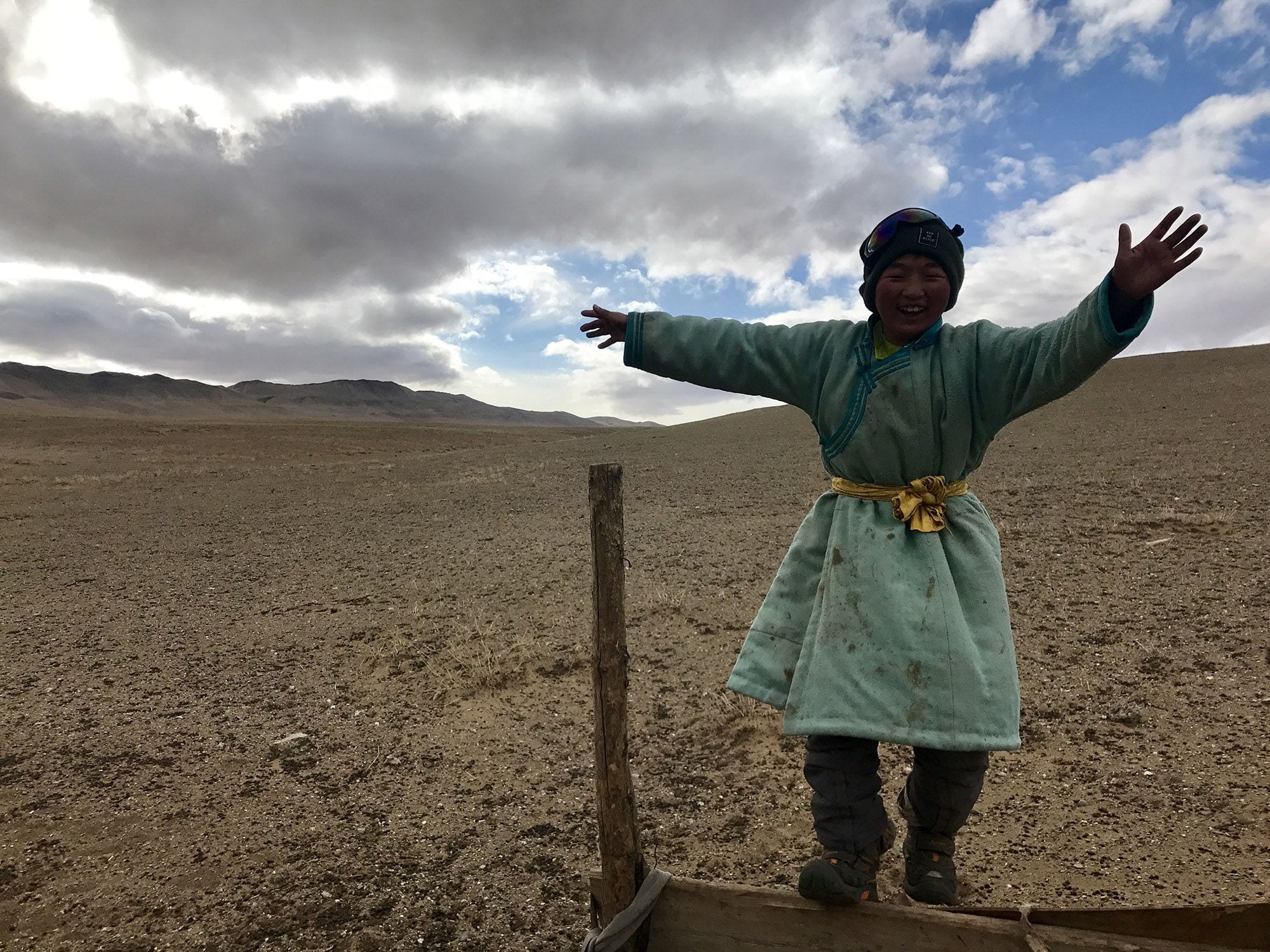Last summer, honors international studies major Maddie Williams was one of the first ever students from Arkansas to study abroad in Mongolia. She spent almost four months in the country, and when she wasn’t attending lectures, she lived among a family of nomadic herders, where she learned to herd sheep and tame camels while combating the often harsh elements. An advocate for experiential learning, Maddie shares the many benefits of immersing herself in Mongolian culture, food and language.
One of the first days in Ulaanbaatar, Mongolia, it was -20 degrees Fahrenheit, and one of my eyes froze shut as I was climbing a monument at the southern edge of the city. Mongolia is not a normal study abroad program. In fact, I, along with a peer on this trip, are the first students from Arkansas to spend time academically in Mongolia. It has made for an unforgettable semester, in a place that is unlike any other.
I chose Mongolia because of its incredibly unique situation, socially, economically and politically, and this program allows us to study the intricacies of it all, through seminar-style lectures that range from professors speaking on the relationship between Mongolian Buddhism and national security, to United Nations officers discussing the feasibility of sustainable development goals. I believe that experiential learning is invaluable to all students, so I wanted my study abroad program to be based around that, as opposed to exclusively traditional learning styles. A big part of this program’s curriculum is time spent living with a nomadic herding family, which is one of the main reasons Mongolia was calling my name.
The absolute highlight of my almost four months in Mongolia was living with a family of nomadic herders. Our program calls it a “drop off” because every student is legitimately dropped off at a family’s ger, away from everything and everyone else, with a family that speaks no English, to live and herd with them. There is no other place in the world where you get to do this; it was one of the most incredible experiences of my life. It was challenging, insane and so rewarding. My days began at 6 a.m., when my host brother, who became my best friend, and I raced to put on our deels, a traditional Mongolian robe-like article of clothing, and went to bring the herd back on foot. Our area of land, unlike many others, had no pen to keep the animals in when they were close to our home, so I constantly ran around the herd, yelling different Mongolian words and singing songs I had been taught by my host family to keep all 400 goats and sheep together. Then, the adult animals were sent out to graze for the day, and my host brother and I were on horseback following and guiding them to different areas. The evenings were a time of gathering all our animals back together and making sure they were going to be okay during the harsh night weather. Around midnight, my brother and I went out around the herd several times to make sure there were no predators. We ended our days gathering dung to fuel our fire for the next day, then we spent time doing English lessons by the light of the fire. While our days were routine, there were many exciting experiences within our herding schedule: I herded on horseback in the middle of dust storms and snow storms, where you were unable to see three feet in front of you; my brother and I chased and caught a wild camel; I conducted thesis research by interviewing herders using my Mongolian language skills; I learned one of Mongolia’s most popular sports—wrestling—and was deemed “a true Mongolian” by my host dad; my brother and I went to the top of mountainous ridges to watch our herd, and we took afternoon naps in subzero temperatures. Every day was a new adventure in itself, and I am unable to talk about everything I saw and experienced, or else this would become a novel!
The culture of food in Mongolia is interesting, to say the least. If you are awake and breathing, you MUST be hungry, and that must be remedied by feeding you with plates of meat dishes—mutton in particular. Fruits and vegetables are not in the everyday diet, it is solely meat, dairy and wheat products. There are several Mongolian dishes that are delicious, but there are some others that are not. Some of my favorite foods are: Бууз (buuz), a steamed dumpling filled with mutton and various spices; Хуушуур (khuushuur), a fried version of buuz; Цуйван (tsuivan), a fried noodle dish with meat and spices; Боорцог (boortsog), deep fried butter cookies; and сүүтэй цай(sootei tsai), a salty milk tea. There are also some foods that I happily leave—like dried milk curds, dog, horse, yak, horse milk, yak butter, cheese curds, butter teas and coffees, milk curd popsicles, mutton fat, cheese popsicles and fermented mare’s milk.
I think when I am back in the States, the first thing I will do is drink cold tap water. Here in Mongolia, we don’t really drink water because it is considered an empty drink. Instead, we drink a variety of hot teas and coffees. If you drink water, it is freshly boiled, and very hot. So, some cold tap water is a luxury I am looking forward to upon my return.
In the Mongolian language, there are sentence particles that indicate whether you are asking a “yes or no” question. All you have to do is listen for that specific ending, and even if you do not know what is being said, you know that the answer is supposed to be either “yes” or “no.” One of the most important things I learned was to say yes. Say yes, and you get to experience adventures that will shape you and challenge you.
Баяртай,
Maddie



